One of the best decisions we made in planning our 2022 summer travels was booking a full week at Sleeping Bear Dunes National Lakeshore on the northwestern shore of Michigan’s lower peninsula. Our campsite was fabulous and the park offers more than enough activities to keep us entertained. Normally I mention our campsite at the bottom at the post, but here I feel I need to lead with….
Our Marvelous Campground
We really like federal campgrounds. National parks, national forests, and Army Corps of Engineers campgrounds all tend to have large, well-spaced sites in very nice locations. National park campgrounds often have the added benefit of being directly connected to trails, the visitor center, or both. But very few national park campgrounds have internet service, and even fewer offer any sort of utilities. Platte River Campground at Sleeping Bear is truly a rare animal — a national park campground with lovely sites and a great location within the park that also has good internet service and even offers electricity. Despite having stayed at scored of national park campgrounds this is just our 4th one (excluding campgrounds run by concessionaires in the parks) with electric service at the site.* The cherry on the sundae is that this campground even has clean, modern toilets and showers on every loop. Wow!
I kept remarking to Ken that if all NPS campgrounds had this outstanding mix of amenities, people would probably murder each other to steal reservations. I think the only thing that keeps Platte River CG in reach is that Michigan is just not a popular destination for travelers from places other than the Midwest. We are visiting at the height of the summer season, and I had no trouble making my reservation online (unlike, say, the mad scramble for Florida state parks in winter) and there were actually empty sites around us every night of our stay. To highlight how unbelievable it is that this place is not completely overrun, enjoy these shots of our enormous, wooded site with perfectly level pavement and electricity and internet service, and plenty of interesting visitors as well.
* For the curious, the other three were Watchman Campground at Zion NP, Black Canyon of the Gunnison NP, and Fort Pickens Campground at Gulf Islands National Seashore.
Overlooks and Historic Sites
As you might guess from the name, Sleeping Bear Dunes National Lakeshore hugs the shore of Lake Michigan, encompassing the largest freshwater dune system in the world as well as inland forested areas. The dunes tower up to 500 feet above Lake Michigan, and the titular “Sleeping Bear” is a distinctively-shaped knoll on top of the dunes that has been used for centuries as a landmark by mariners navigating the lake. One day we toured the length of the national lakeshore property, stopping at a number of spots to get a look at the dunes, Lake Michigan, and other points of interest. Similar to our land-based tour of Pictured Rocks National Lakeshore, most viewpoints involved relatively short jaunts from the parking area.
The Pierce Stocking Scenic Drive is not to be missed since it has 12 waypoints and offers commanding views over crystalline interior lakes, rolling farmland, verdant forests, the dunes, inviting beaches, and of course Lake Michigan. But there are plenty of other great spots to be seen as well. We particularly liked the lake view from the Pyramid Point overlook (the photo at the top) since it involved a short forest walk to get there and gave us a nice perspective on the Manitou Islands just offshore. It can be difficult to get a sense of scale in these sweeping views. The tiny white speck toward the upper right in that top photo is a historic lighthouse, while the ant-like specks in the 5th photo below (click for larger image) are people along the top of the dunes. Unlike several fools we observed, we did not attempt to scale the steep, sandy inclines of these dunes. Try spotting a few of these miserable souls ascending from the lake in the 5th photo below.
The large number of lighthouses around the Great Lakes is a persistent reminder that these clear blue-green waters can also be deadly, and that reality is brought home at one of the park’s sites focused on the human history of the area. The Sleeping Bear Point life-saving station was placed directly on the coast of the Manitou Passage, an enticing shortcut on the way from Chicago to the Mackinac Straits but one filled with treacherous shoals. Today the station is a maritime museum telling the story of the 60+ similar facilities that once ringed the Great Lakes. In Florida, to deal with the inevitable shipping losses arising from hurricanes the coast used to be dotted with Houses of Refuge, which were structures stocked with food and water where shipwrecked sailors could find shelter. Here, coastal life-saving stations were fully manned outposts at which a half dozen men lived, trained, and patrolled the shores in preparation for actively rending aid to ships in distress.
When springing into action, the life-saving staff had a few options. One option was to push lifeboats out of the boathouse and down a short set of railroad tracks to launch them from the beach into the surf. But heading out into stormy weather in rowboats was no picnic, so the preferred option was to use the Lyle Gun. This device was rolled down to the shore on a wagon and would shoot a rope from shore to the stranded ship. Once a strong rope was secured between the ship and shore, sailors would be pulled along it to shore while wearing a “breeches buoy” — basically a life ring with shorts sewn into it to create a seat. The maritime museum has original examples of this equipment, along with friendly volunteer docents to explain it all, plus interesting displays in the quarters where the keeper and crew lived.
Other cultural sites of the park include 19th century farms in the Port Oneida Rural Historic District and several different buildings with exhibits in the Glen Haven Historic Village, which used to be the center of operations of a logging company that sold fuel wood to steam ships plying Lake Michigan.
On the Trails
While the cobalt and aquamarine waters of the lake grab most of the attention from visitors, we found the inland forests to be just as compelling. One drizzly day we packed our rain jackets and headed to the nearby Old Indian Trail. The three-mile trail loops through a mature beech-maple forest, and in the silent gloom the forest had an enchanted quality. We made a quick stop at the one Lake Michigan overlook along the trail, but our favorite activity was seeing how many different types of mushrooms we could spot. Kingdom Fungi is well represented here.
On a more promising day, we hiked the Lasso Loop trail in the Platte Plains trail system, which can be accessed directly from the campground loops. A much longer hike at around 7 miles, the trail includes mature mixed forest, a few open fields, pine plantations, and some wetlands. I loved the forest, especially the areas carpeted with ferns and blueberries, and the variety of mushrooms here was even more impressive than on the Old Indian Trail. It felt great to finally tackle a longer hike, but some very unfortunate encounters with swarms of ravenous mosquitos around the wetlands prevented this from being a five-star hike.
Had I realized how many mushrooms we would see, I would have brushed up on mushroom ID (and collecting rules) and you had better believe some of those boletus (porcini) would have come home with us. Still, our time in the forest was well spent. While the popular lake overlooks were pretty crowded at times, in our hours spent out on the hiking trails we encountered a grand total of seven people (and 3 dogs).
One thing we did not do: tackle any trails that were described as “mostly sand.” We hate hiking on soft sand, and we had more than enough sand interactions on the normal trails, especially when making brief trips to various overlooks along the dunes.
On the Water
Driving in and out of the campground every day it was impossible to ignore the busy canoe launch right across the street. Further investigation revealed that the lower section of the Platte River flows out of nearby Platte Lake, directly past the campground, into a small body called Loon Lake, and then out to Lake Michigan. Seeing the crystal-clear water flowing down the river, and seeing the large crowds of people who do one-way float trips with the outfitter across the street, we concluded a few things. First, we needed to get our kayak out on that river! Second, we would need to get out in the morning to avoid crowds. Third, since there is enough current to propel rafts and tubes downstream, we knew that our return journey would be a challenge.
We succeeded in dropping into the river before the crowds, and we limited our trip to paddling the perimeter of Loon Lake before heading back upstream. As we made our way back upriver, I was thinking (and maybe saying, possibly in a despondent voice), “We are so stupid for doing this. This is terrible.” But our perspective changed when a man floating by in a tube waved his koozie-enshrouded beverage at us and declared, “You guys are some badass mofos for paddling upstream in this river!” I would like to officially inform that random gentleman that his pep talk was a big help in powering us back to the canoe launch.
The final great thing about our campground is that it is located within a short walk (<1 mile) from the shore of Lake Michigan, and on our final day we took advantage of fine weather to frolic at the beach in the afternoon. I amused myself by staging a photo op with Amber Share’s marvelously entertaining book Subpar Parks: America’s Most Extraordinary National Parks and Their Least Impressed Visitors, then took a dip in the refreshing clear waters of Lake Michigan. The water is just as clear as the Gulf of Mexico on a calm day, yet strangely devoid of flavor and buoyancy. It was a lovely end to a lovely visit.
Next: We head south along the shore of Lake Michigan to Holland for one final coastal visit.
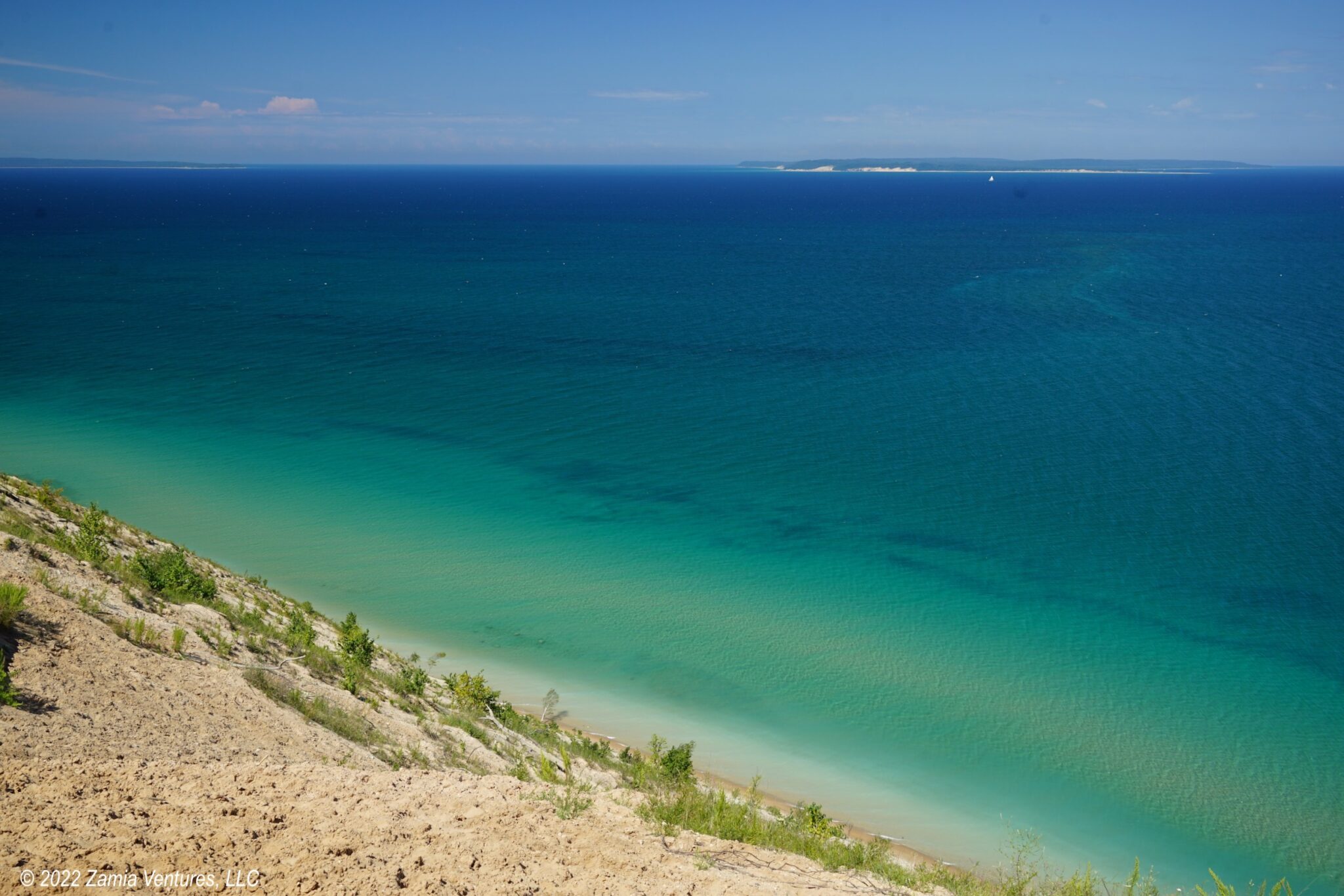
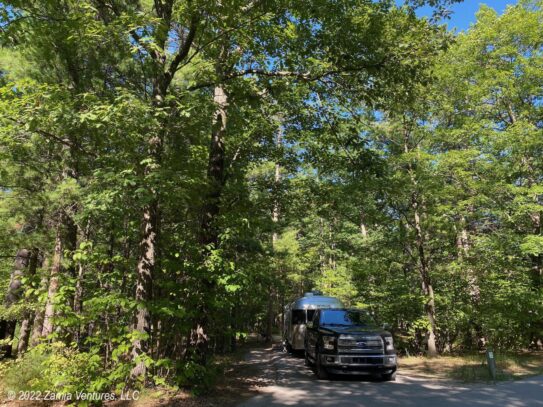
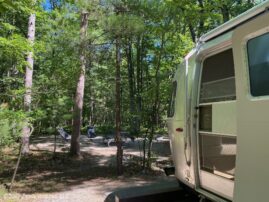
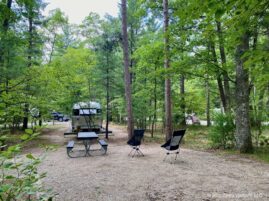
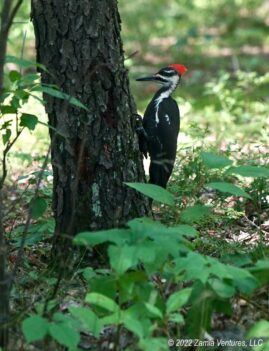

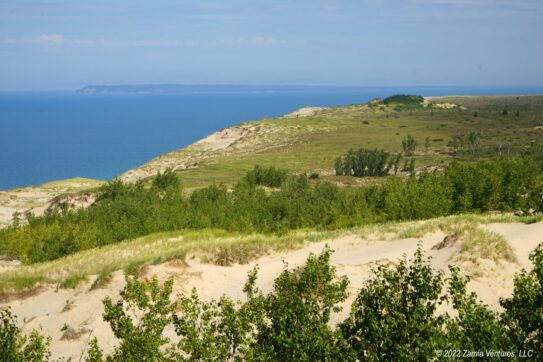
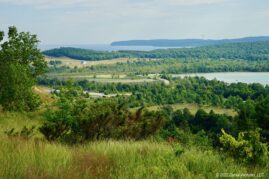
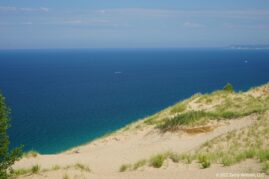
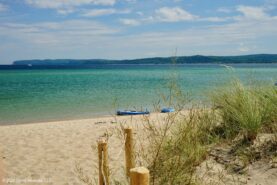
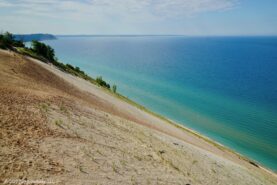
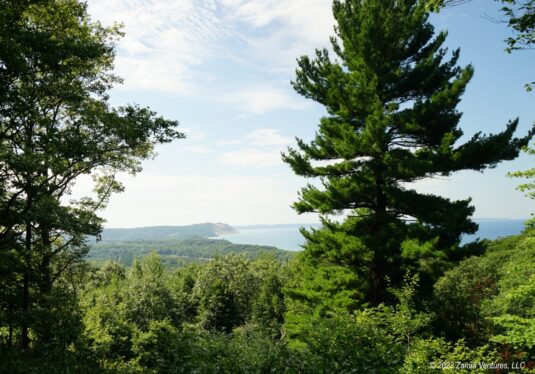
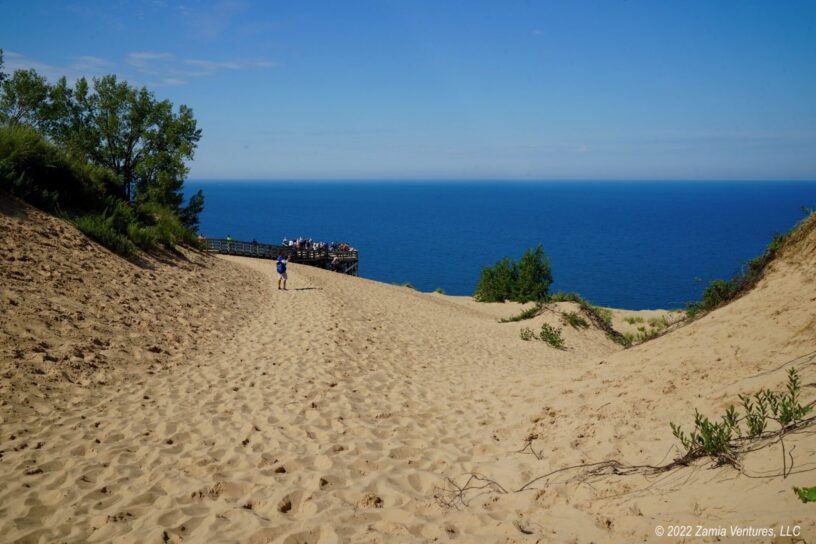
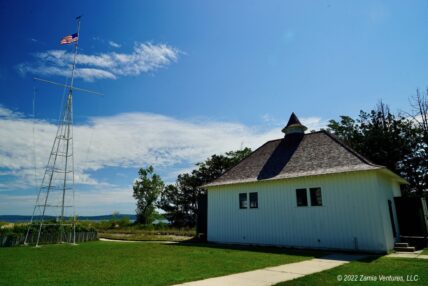
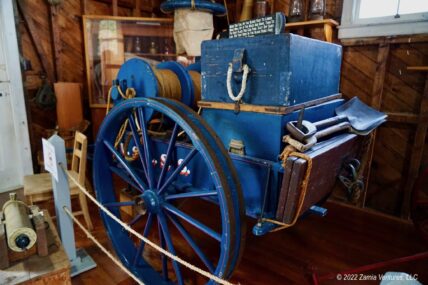
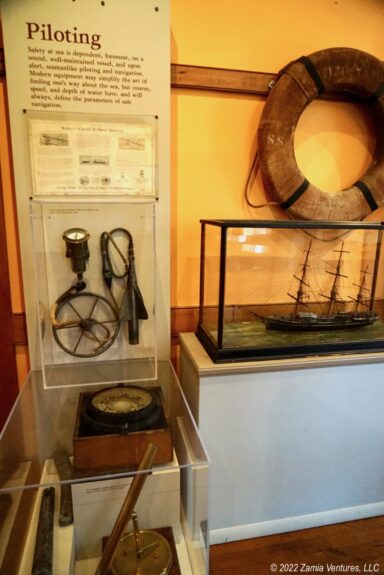
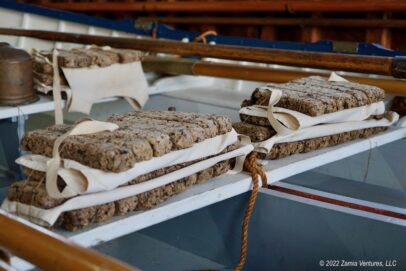
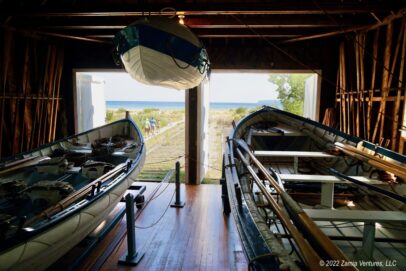
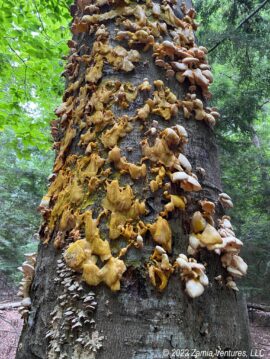
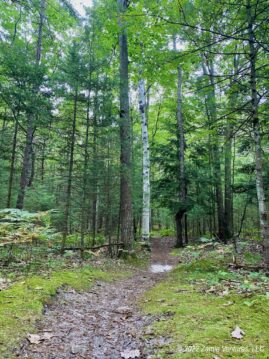
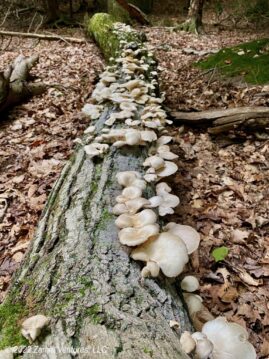
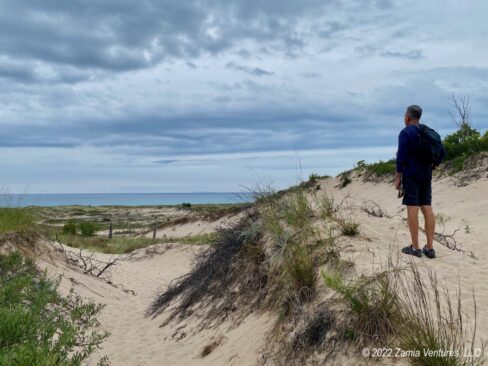
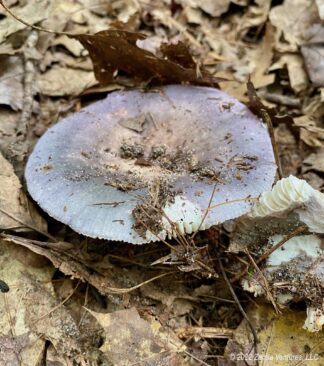
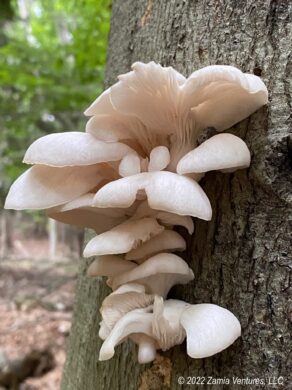
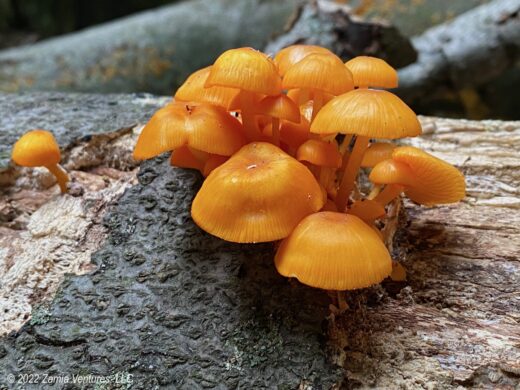
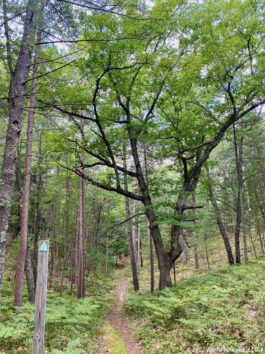
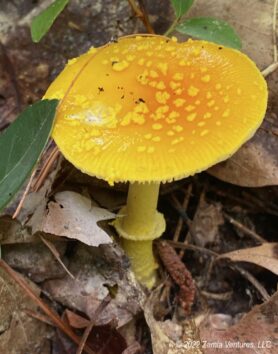
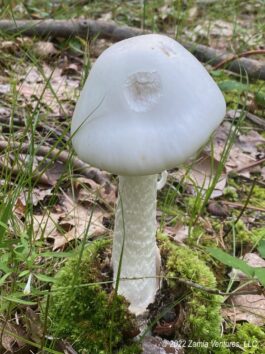
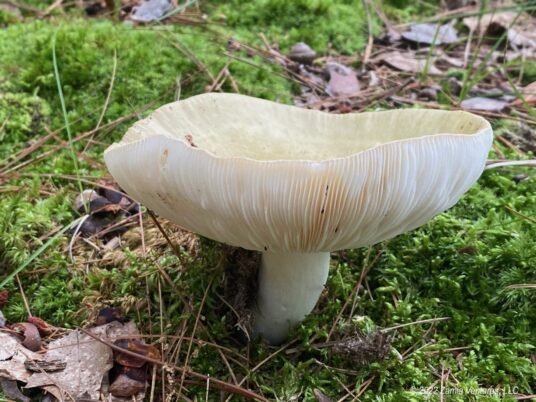
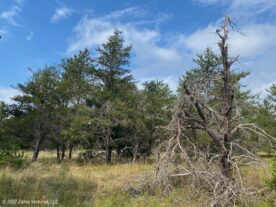
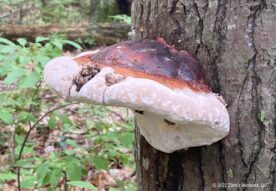
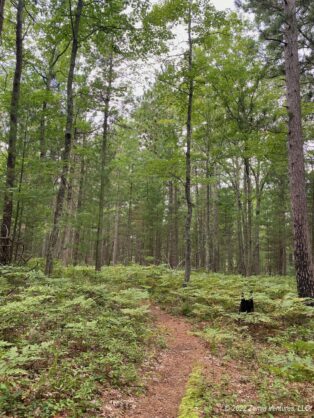
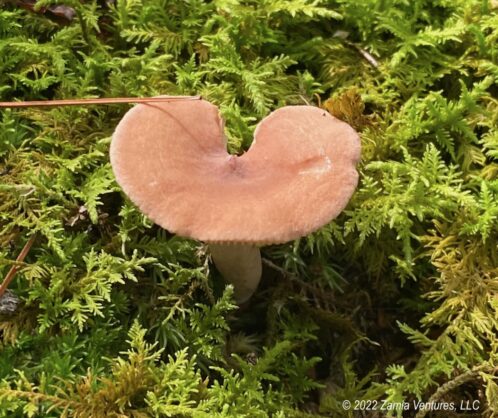
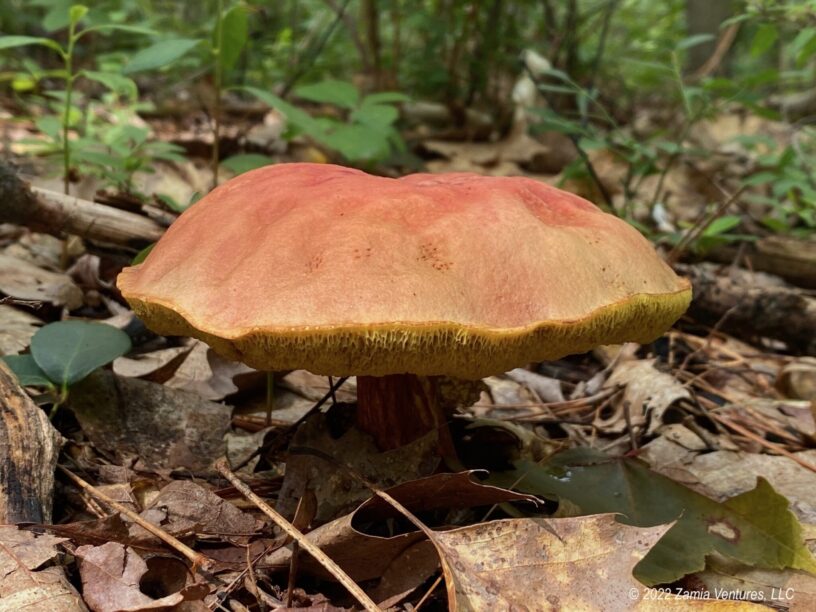
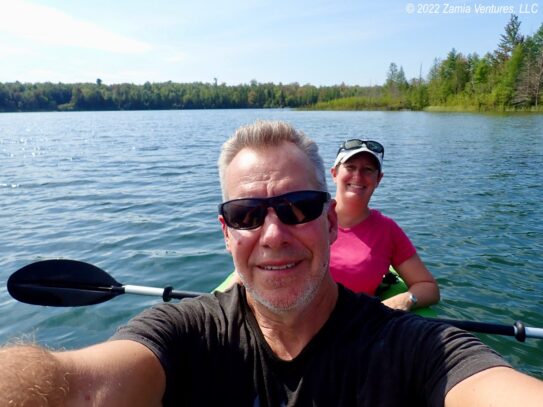
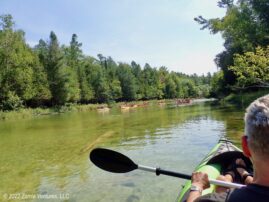
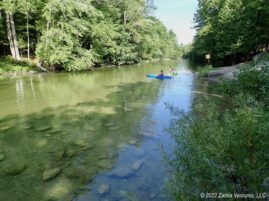
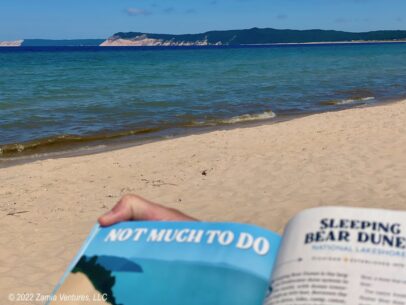
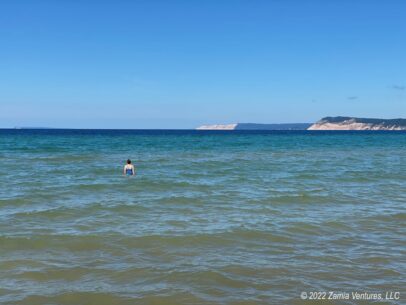
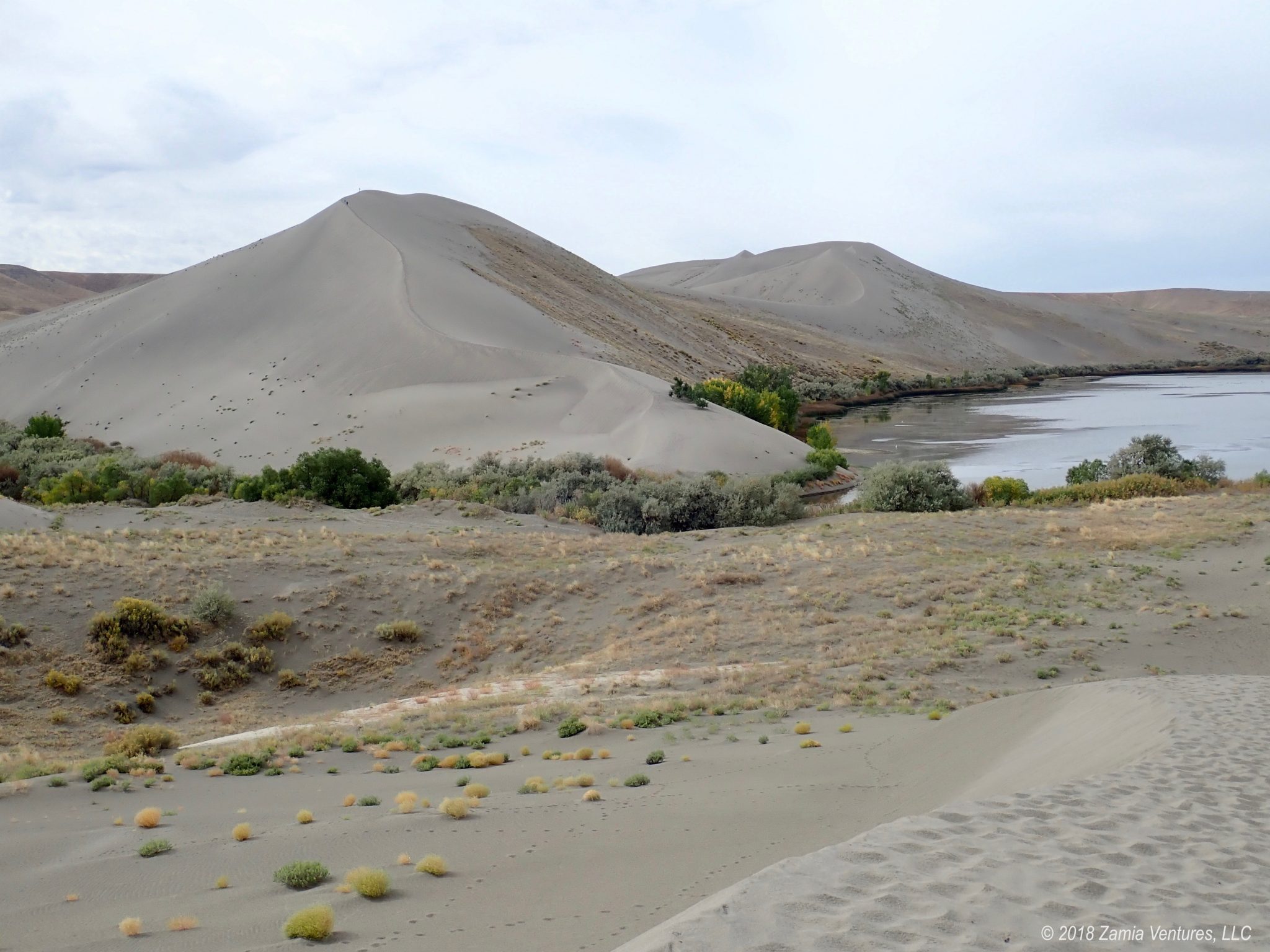
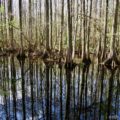
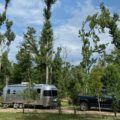
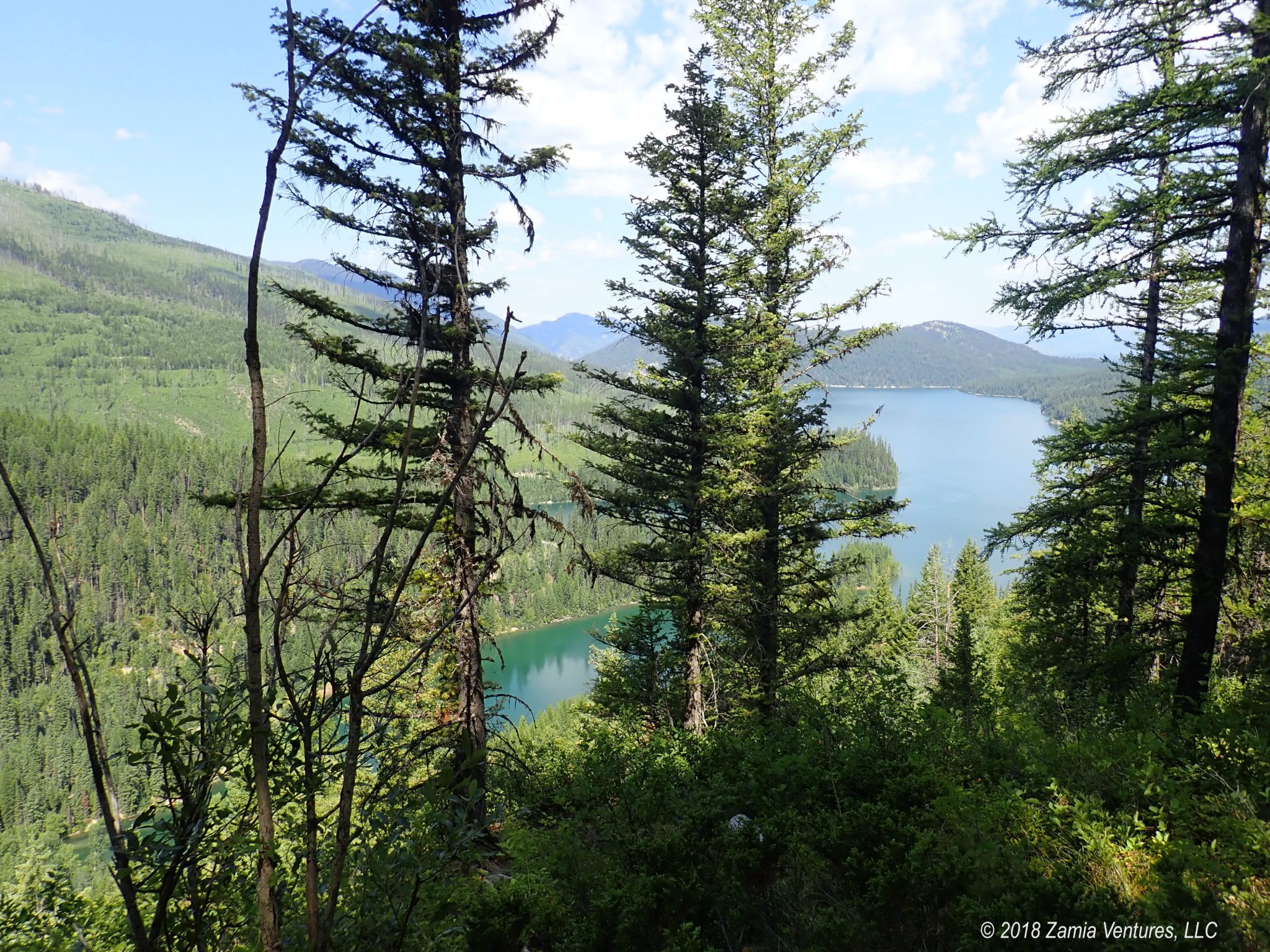
I agree with that guy: you are some badass mofos… I would have been floating along next to him, beer in hand. Y’all are way too motivated.
I, too, am amazed that campground wasn’t more crowded. I am pretty sure that was one I tried to get a reservation for and the computer just laughed at me. I remember getting demoralized very quickly with our Michigan campground options and turning to commercial places, so I think your dedication and willingness to get up very early really served you well. Plus, it sounds like your timing may have just been ideal. Whatever the case may be, you certainly had a great spot to explore a great spot.
Ha! The upstream part was only about a mile, and we barely made it. It reminded me of our buddies on the Lewis & Clark expedition who paddled the Missouri upstream for 1000+ miles. No, thank you! We would die. Probably the first day.
I agree that the public campgrounds in Michigan are very popular — the state parks were harder to secure than Sleeping Bear, if I recall correctly — and I really don’t understand why. They are really not that great. Stay tuned for an end-of-summer wrap-up that will probably include some snark on this topic.
Making reservations at Sleeping Bear was one of the best things we ever did, too. Then Covid, and cancelling them was one of the saddest things we ever did. It looks like we really missed a great place! TBG would be all over those boletus! I can hear it now, and empathize, with the “we thought this was a good idea when we started out” activity. Cheerleaders are very cool, and this proves you are *not* a lazy person like you claimed.
I’m disappointed on your behalf that you weren’t able to visit SLBE. Stupid pandemic. As you can probably tell, it was one of our favorite stops of the trip so far, despite making some questionable choices in how we would spend our time. I really wasn’t sure what to think about the park from its initial description and videos — is it mainly for looking at scenery? historic sites? or what? — but we ended up really enjoying the variety of activities and experiences there. If only we had the foresight to plan for mushroom foraging…..
We’re back in the land of connectivity! You know exactly where we’ve been, LOL. Anyway, I am delighted by all of the beauty in this post, and so happy that we’re going to be following in your footsteps in a few weeks. Here’s hoping that we have great weather like you did!
I laughed out loud at your “bad ass mofo” kayaking story. We always try to kayak upstream first, but in trying to envision your kayak trip, that doesn’t seem possible (or I’m sure you would have done the same). Actually, I’d love to float down the river in an inner tube with a beverage, but it’s probably going to be too chilly by the time we get there.
I had a couple of hikes already on my list, but thanks for alerting us to some additional ones. Hopefully by the time we get there the mosquitoes will be history. And like you, we hate hiking in sand, so that’s definitely not on our agenda. Very fun that you went for a swim in the big lake. Weird for it to not be salty, isn’t it? But great to have no sharks or stingrays or other bitey things. Oh…and mushrooms! I want to harvest mushrooms, but those boletes look nothing like the boletes we’ve harvested on the Oregon coast. I need to educate myself before we get there. Okay, I’ll be quiet now. Can you tell I’ve been deprived of connection with my friends??
I really hope you have nice weather during your time at Sleeping Bear since, as you can see, it is full of outdoor adventure opportunities. Fewer mosquitoes would only make it better! You may want to contact the float trip outfitter (Riverside Canoes) about shuttle service and making it a one-way trip if you do venture onto the Platte River — by the time you arrive the hordes of float trip people will probable be gone and they might have space for you.
If it’s too chilly to get on the water, you will have plenty of great hikes to keep you busy, and for the most part they are sand-free. I can’t overstate just how much I loved the mixed forests around the campground, with spruce, fir, hemlock, pines, plus a variety of deciduous trees like birch, beech, and maple. If you hit any of the fall color, that place will be spectacular.